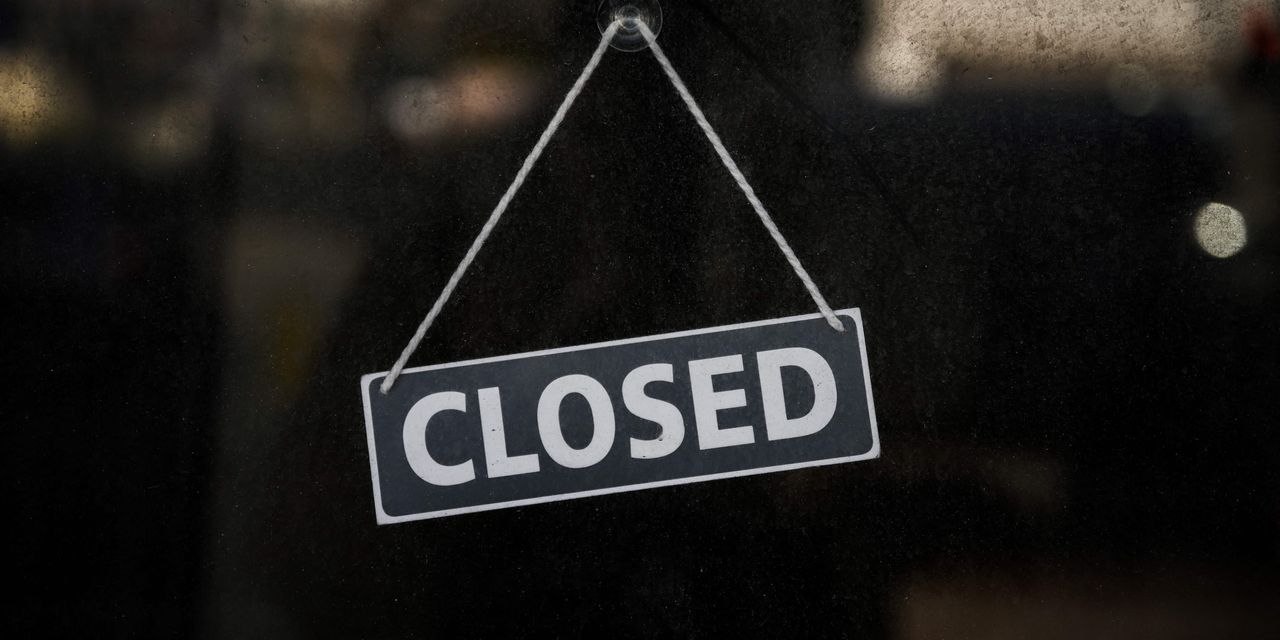The market’s favorite recession indicator has been flashing for 222 consecutive trading days — the longest stretch since 1980.
The Treasury yield curve, represented as the difference between the yield on the 2-year Treasury note
TMUBMUSD02Y,
and the yield on the 10-year note
TMUBMUSD10Y,
has been persistently inverted since July 5, 2022, according to Dow Jones Market Data. That’s the longest such streak where short-term yields have eclipsed long-term yields since the 446 trading days ending May 1, 1980.
Some bond-market experts expected the curve would swiftly invert soon after the Federal Reserve started delivering what would become a spate of four consecutive jumbo 75-basis-point interest-rate hikes last spring.
It eventually happened on April 1, 2022, but didn’t last long, only holding through April 4. A few months later, in early July, the so-called “2s10s” curve inverted once again, and has remained in that state ever since.
Typically, longer-dated bonds carry higher yields because investors demand to be compensated for the additional credit risk of lending money for a longer period.
However, when recession fears build, or the Fed hikes interest rates aggressively, this relationship can be thrown out of whack as investors become willing to accept a premium to keep their capital locked up in longer-dated Treasurys. Bond yields move inversely to prices.
Few indicators have proved as reliable of a recession warning sign as the yield curve.
An inverted curve has preceded every U.S. recession since the early 1960s, said Campbell Harvey, a Duke University finance professor and head of research at Research Affiliates, an asset-management firm.
Harvey pioneered use of the yield curve as a predictor of recessions early in his academic career and has found it to be an extremely reliable indicator. In recent history, there have been no examples of the yield curve inverting without a recession ensuing.
It’s important to point out a few caveats: In his research, Harvey preferred to use the 3-month Treasury bill yield instead of the 2-year note yield, although economists, bond-market strategists and traders use a plethora of different spreads as their preferred measure of the curve.
Another popular alternative is the spread between the 5-year Treasury note yield and 30-year bond yield.
The Duke professor and others contend that the 3-month/10-year spread is the most reliable of the yield-curve indicators, although that has only been inverted since late October.
Right now, all popular yield-curve measures are flashing a recession warning in unison, Harvey said during a phone interview with MarketWatch.
“The yield curve shows there’s a high probability of a recession,” Harvey added.
He also noted that the particularly deep inversion has caused problems for the banking sector, helping to instigate the collapse of Silicon Valley Bank and other U.S. lenders.
“An inversion is bad for banking, we’ve seen that play out already,” he said.
Turns out, the length of time that the Treasury yield curve remains inverted has been historically related to the length of the ensuing recession, with longer periods of inversion typically preceding harsher downturns, according to data shared by Harvey.
Right now, it’s hard to say when the relationship between short- and long-term bond yields might return to normal. According to Priya Misra, head of global interest-rate strategy at TD Securities, investors would need to be convinced of inflation’s defeat, or that the U.S. economy will power through, defying the historical link between inversion and recession.
“What the inversion is doing is, it’s the market saying growth is going to slow but inflation will stay high,” Misra said during a phone interview with MarketWatch. “For the curve to steepen you need inflation to no longer be a problem.”
Read the full article here













